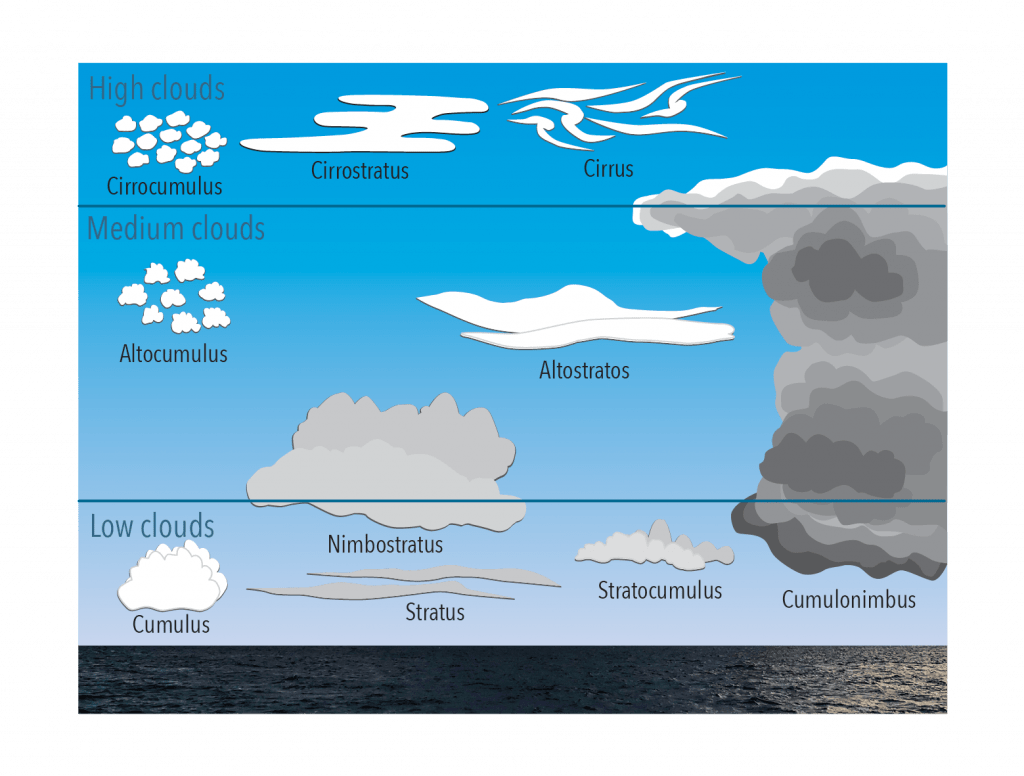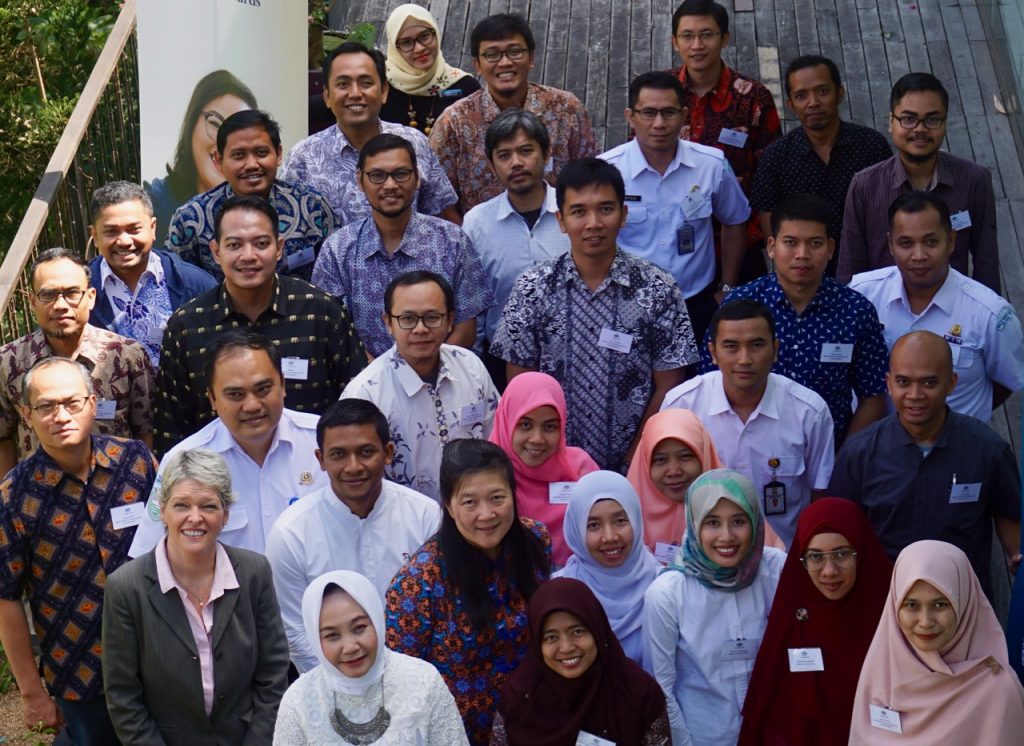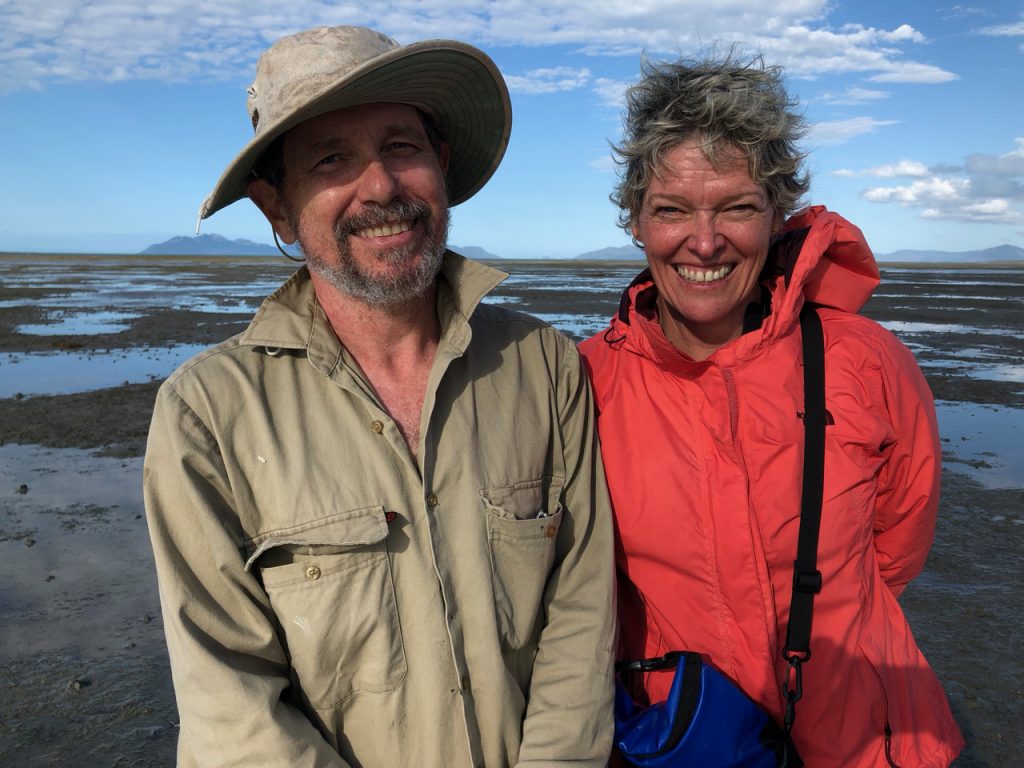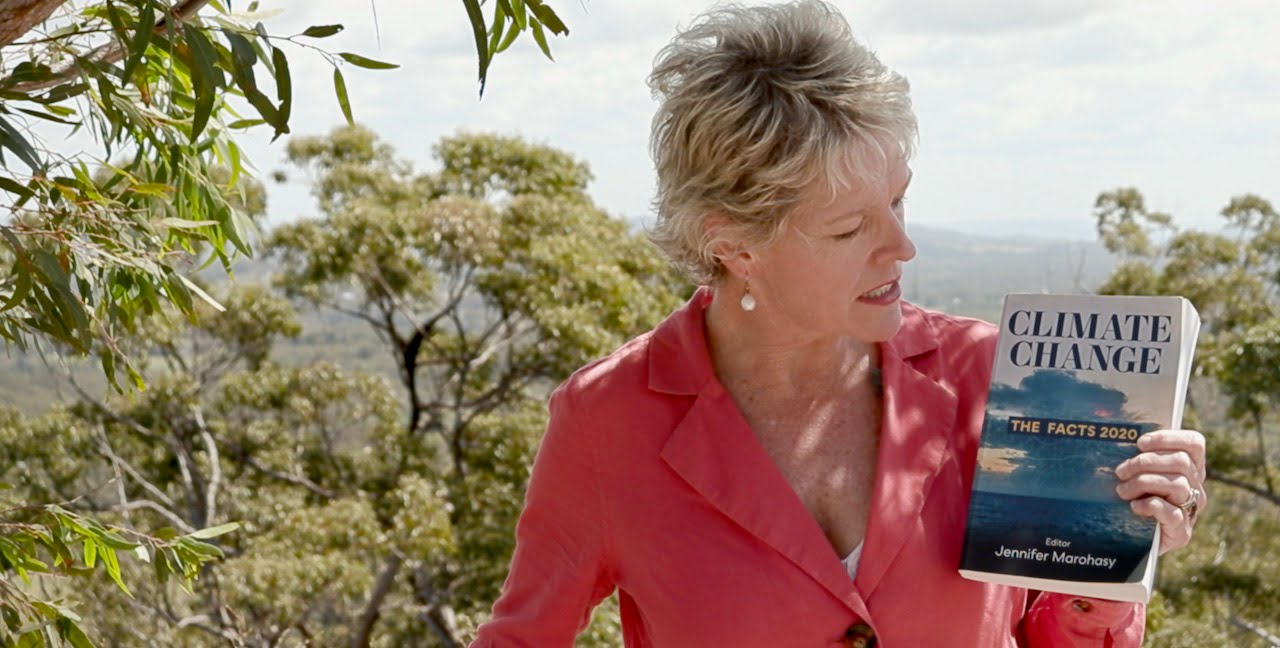He is calling it the ‘thinking sceptics’ guide to climate change. The article is by journalist Graham Lloyd in The Weekend Australian. It is about my new book, Climate Change: The Facts 2020 (CCTF2020).
Graham Lloyd has read the book – all 20 chapters – and he understands the importance of the three chapters by the atmospheric physicists Richard Lindzen, Henrik Svensmark and Peter Ridd. Graham understands that they provide a new perspective on established research that has been difficult for the mainstream climate change establishment to understand, let alone accept.
Graham Lloyd, he understands that Peter Ridd’s important chapter in CCTF2020 builds on the pioneering work of Joanne Simpson, and that Richard Lindzen destroyed the hard core of Catastrophic Anthropogenic Global Warming (CAGW) theory twenty years ago; that was in Lindzen’s seminal paper on the relationship between high altitude cirrus cloud cover and carbon dioxide. There is no role for carbon dioxide in Henrick Svensmark’s theory of how the climate changes (chapter 10), and Svensmark, like Lindzen, is obsessed with clouds.

I’ve been saying for so long now that it is not good enough to just disprove CAGW theory, we need to have an alternative theory. I’m hoping that CCTF2020 is the beginning of some public discussion about this. Geoffrey Duffy’s chapter on water vapour (chapter 11) is also important in terms of understanding the basics of weather and climate on planet Earth.
The history of science suggests that new theories are usually supported by new tools. (Galileo and Kepler, for example, were obsessed with telescopes.)
I’ve no doubt that one day, climate models based on artificial intelligence (AI) will replace simulation modelling for weather and climate forecasting. These AI models may look something like the models that John Abbot describes in chapters 9 and 14 of CCTF2020.
Such models may be first made operational by Indonesian meteorologists working at Chinese universities who have taken forward the ideas pioneered by John Abbot and myself. The head of the Indonesian Bureau of Meteorology, Rita Karnawati, understands that weather and climate can be accurately forecast. She is a fan of my work and has a copy of the last book in the CCTF series, published in 2017.
Rita Karnawati thinks about climate in terms of cycles that can be described mathematically. If the Indonesians and Chinese develop this capability more generally before we do in the West, it will give them a big military advantage. She invited me to Indonesia back in 2018-2019 to train her best and brightest in AI.

As I explain in the introduction to CCTF2020, it was British meteorologist James Stagg’s capacity to forecast the lull in stormy weather in early June 1944 that gave the allies a huge military advantage in World War II. My mother still remembers D-Day, she was living in London through the war. She doesn’t remember that there was a lull in the storm, but rather waking up to the drone of aircraft overhead. Mum will be ninety next March.
James Stagg, the British meteorologist who advised the supreme commander of the allied forces Dwight D. Eisenhower, understood not only weather fronts, but also lunar cycles. He thought in terms of mathematics and tides – not just ocean tides, but atmospheric tides. And the weather station at Blacksod Point in the far west of Ireland accurately recorded and reported weather statistics to him.
I met with Oscar Alves, who heads the team at the Australian Bureau that is meant to be developing methods for seasonal rainfall prediction. That was back in August 2011, when I was so excited about the potential to forecast monthly rainfall using AI.
Oscar Alves told me that accurate monthly rainfall forecasting is essentially impossible, and that he wasn’t interested in AI because it would require him to learn something new. We really are a civilization in decline in the West, and our government bureaucracies promote meteorologists based on their attachment to carbon dioxide rather than their enthusiasm for accurate and skilful weather and climate forecasts. This is not the situation at all in countries like Indonesia and China where they know that carbon dioxide is mostly irrelevant.
Oscar Alves’s boss, Andrew Johnson, the current head of the Australian Bureau of Meteorology, seems to understand very little about mathematics or meteorology. At the recent Royal Commission into bushfires where Andrew Johnson was an expert witness, he commented that parts of Australia had experienced a rapid decline in rainfall. We might assume he was referring to the south-east of Australia because vast areas of Eucalyptus forest burnt in the south-east this last summer. Yet if we consider the official statistics from his own office, from the Australian Bureau of Meteorology, for this region, we see that annual rainfall is variable and that while the 1950s and 1970s were wetter than recent years – there is no evidence of long-term decline in rainfall. In fact, whichever way the statistics are scrutinised, there is no evidence for a decline in rainfall – in the south-east of Australia, for the summer period, or even considering the data for all of Australia for all months since 1900. This is explained by me in chapter 15, that is about the history of bushfires in Australia since 1851.

My best friend from school, Catherine, has spent her entire career teaching kids mathematics. She was staying with me here in Noosa recently and it got me thinking about the importance of not just publishing graphs, but helping people understand them.
If you have kids and grandkids it is important that you take on the responsibility of teaching mathematical literacy, and Catherine provides some tips in my last blog post.
We can’t give up on any of this. We need more children that can think critically, and scientists at the Australian Bureau of Meteorology that can-do maths and read graphs. Someone must take this up as their mission, to put a broom through the current team there that are dangerously incompetent.
I would like to thank John Roskam at the Institute of Public Affairs (IPA) for conceiving the Climate Change the Facts series and having confidence in me to edit this fourth book in the series. I would like to thank everyone who donated to the book! It meant that I did have the necessary budget to pay John Castle who did such a good job to ensure that all the graphs, and charts, and illustrations, are not only colourful and fun, but also technically accurate.
You can order the book here: https://climatechangethefacts.org.au/
Also, please, if you are in Australia, then go and buy the Weekend Australian newspaper, and/or take out an online subscription then leave a comment at the end of the great article by Graham Lloyd about the book.
Graham Lloyd writes:
There is a big ‘what if’ buried at the heart of Climate Change: The Facts 2020. What if nature has a special way of using the sun, cosmic rays, water vapour and clouds to regulate the temperature of the planet. What if these processes have already been explored but too hastily dismissed? Do they deserve a closer look?
When Jennifer Marohasy sat down to conceive the latest in a series of climate change publications for the Institute of Public Affairs she was determined to remain faithful to the scientific method and be guided by past experience.
In her view, the history of science suggests you don’t actually replace a theory until you come up with another possible explanation.
“Rebuttals don’t cut it unless you have an alternative,” Marohasy says.
The result is Climate Change: The Facts 2020 which can be alternatively described as a thinking sceptic’s guide to climate.
The fourth in a high selling series by the IPA and the second edited by Marohasy, the book deals with a wide range of hot topics from bushfires to sea levels, polar bears, volcanoes and temperature records.
It brings together a wide range of Australian and international voices including polar bear specialist Susan Crockford, investigative journalist Donna Laframboise and satellite temperature measurement pioneer Roy Spencer. The book’s true ambition, however, is captured in the contributions of atmospheric physicists Richard Lindzen and Henrik Svensmark and well known Australian contrarian Peter Ridd.
Lindzen, Svensmark and Ridd each deal with some of the most contentious issues in climate change science, the role of clouds and the sun.
Rather than break new ground each presents a fresh view of established work that has proved difficult for the climate change establishment to accept.Together, Marohasy argues, the contributions go to the core of anthropogenic climate change theory and ‘give the book longer term currency’.
According to Svensmark, since low clouds are very important for the radiative energy balance of the Earth — by reflecting incoming radiation back to space and in this way casting a shadow — they can cool the Earth’s atmosphere.
He argues it is changes in cosmic-ray flux modulated by the sun and the position of our solar system relative to exploding stars in other galaxies that will drive this. There is no role for carbon dioxide in Svensmark’s theory of climate change.
His leads to the conclusion that a microphysical mechanism involving cosmic rays and clouds is operating in the Earth’s atmosphere, and that this mechanism has the potential to explain a significant part of the observed climate variability over the history of the Earth.
Ridd revisits the pioneering work of Joanne Simpson, who studied cloud formation and tropical thunderstorms, and how they could result in tremendous amounts of energy transfer from the Earth’s surface to the top of the troposphere — where it can be radiated into space.
Simpson is a legend in the meteorological community of the US. She was awarded the American Meteorological Society’s 1983 Carl-Gustav Rossby Research Medal — the highest award in atmospheric sciences. But her climate change theory is not included in the dominant view or models. Ridd builds on the mathematics laid out by Simpson and Herbert Riehl back in 1958 and likens the process to the pistons in a car engine. His punchline is that this huge atmospheric engine helps cool the surface atmosphere.Applying some mathematics, Ridd shows that more greenhouse gases in the lower atmosphere can make the heat engine more powerful. In short, Ridd demonstrates that with increasing greenhouse gas concentrations in the lower atmosphere, air temperatures can increase and thus raise the water vapour content of the air if this occurs over tropical oceans.
Ridd calculates that for every 1C rise in tropical temperature, the heat transfer by the convection pathway will increase by 10 per cent.Lindzen, meanwhile, has focused his research on high altitude cirrus clouds and their heating effect on the environment because they reflect infra-red radiation back to Earth. Lindzen makes the analogy with the pupils in our eyes changing size relative to how bright or dim the light is.
Specifically, Lindzen has hypothesised that as the atmosphere warms from increasing concentrations of greenhouse gases, the area of cirrus cloud decreases, providing a negative feedback as more infra-red radiation is able to escape into space.
Both Lindzen and Ridd hypothesise that there are cloud-related negative feedback loops in place that will mitigate the potential effects of increasing concentrations of greenhouse gases on Earth’s temperature.
Neither of them deny the potential for greenhouse gases, especially water vapour and CO2, to warm the Earth. Rather they explain that because of the complexity of the physical processes at work, in particular, and the role clouds play in facilitating negative (cooling) feedbacks, the Earth is unlikely to overheat.
The ideas presented in the book are complex and counter intuitive to the dominant narrative of a world hurtling towards climate catastrophe because of carbon dioxide. And for this Marohasy is unapologetic.
‘We live at a time when climate change is deemed a morally important issue,’ Marohasy says.
It is claimed that greenhouse gases from the burning of fossil fuels are causing unprecedented and potentially catastrophic warming of the Earth’s atmosphere, she argues.
‘Those who disagree with this claim, or who ask for more evidence, are generally labelled “deniers” of climate change,’ Marohasy says.
‘In reality, the dispute is not whether the climate changes; it is what causes the change (could it be mostly natural rather than human-caused), and whether the current rate and magnitude of change is unusual.’
The book is a two-finger salute to what US president Dwight Eisenhower might have called ‘the climate–industrial complex’. In his farewell address, in a television broadcast on January 17, 1961, Eisenhower warned about the dominance, or the ‘capturing’, of science- based public policy by what he called a “scientific–technological elite”.
Marohasy argues it is this same elite who have dictated climate-change policies for some decades now, with wide-ranging economic implications.
‘Many people may prefer their “facts” to be short and to the point,’ Marohasy says in the book’s introductory chapter.
‘But climate science is complicated and, despite the considerable expenditure on research, our understanding of the atmosphere is far from complete.’
Marohasy says she has no doubt that if we had a properly constructed theory of climate, scientists would be able to better forecast droughts, floods and bushfires. There would be less fear of catastrophic sea-level rise, and more curiosity rather than despair when it comes to polar bears and penguins.
Log on, and read the article by Graham, ’tis here.



 Jennifer Marohasy BSc PhD is a critical thinker with expertise in the scientific method.
Jennifer Marohasy BSc PhD is a critical thinker with expertise in the scientific method.

You are one of the World’s climate greats!
Don’t EVER give up, give in, or equivocate!!!!
Thanks Jennifer.
Can’t wait to read my complementary copy, and have a number of copies on order for some of my doubting friends and family.
Some time back we were told that the rivers would run dry and the dams fail to fill and the ground would be so hot the rain would evaporate off.
In this context China bid for 2.4% of Australia’s agricultural land, the Kidman Empire.
https://theconversation.com/morrison-blocks-chinese-acquisition-of-historic-kidman-cattle-empire-50960
Around that time the BOM was hacked as was the ADF.
My own thought was that ‘they’ were simply after non homogenised data, so they did not have to make inaccurate business decisions based on the BOM climate and weather forecasts.
JM’s Blog cites the defense/weather connection in battlefield decision making.
There was always the opportunity to monitor SCRAM tests at Woomera, were the Chinese to buy up the property next door.
https://www.abc.net.au/science/slab/hyshot/default.htm
The Blog makes the connection between machine learning, weather and climate forecasting.
It looks as if the Chinese don’t believe the BOM assessment of our climate.
Even if ‘The Chinese’ be perceived as ‘the enemy’, we should learn from them, when they make good bets on our agricultural land and climate.
Thanks for the logic and commonsense as usual, Jen.
It is so hard to believe how stupid the world is becoming with its self brainwashing on climate.
Particularly when there is nothing happening today, climate-wise, that hasn’t happened for the last 10,000 years of low atmospheric CO2.
Let’s hope your book helps get their minds right. My copy will be passed around to those who need it.
Doubt that the problem with BOM scientists is one of incompetence. More likely to be that they all have to follow orders and conform to the IPCC theory of atmospheric CO2 causing climate change.
I have spent many years on your blog Jennifer and argued extensively with the trolls about fact and logic which always seem to be of little importance to them. I have spent many hours discussing global warming anthropogenic global warming and catastrophic climate change. In this there is a myriad of minutiae of detail about where the truth lies. But no matter what my understanding and the understanding of many others did not matter a jot. I finally came to the conclusion that this whole argument really does not have anything to do with the temperature of the planet or the climate. We are fighting the wrong fight and more than likely the core of the environmental movement realises that and is pleased.
Michael Moore in his movie the “Planet of the Human” convincingly argued that renewable energy was a foil distract from the true activities of energy companies. He showed himself to be a deep ecologist. They know the truth threat it is not what they say it is humanity. For them humanity is the enemy and they must realise this and submit. If not they must be crushed. A deep ecologist wishes for a world population of about 500 million and a lifestyle best described by England in the early 1700s.
We are deluded that facts or logic mean anything. We are fighting a religion that wishes to destroy us.
https://youtu.be/UTgNtvTuYRU
Looks like my usual dilemma of finding Christmas presents is neatly solved.
Thank you Jen, your book will be the most useful Christmas present I have given in years.
The anthropogenic climate change fanatics are NATURE DENIERS. The term “nature denier” MUST always preface any references to anthropogenic climate change “scientists or to what they have said or written. Do not forget NATURE DENIER must be linked to the man-made climate change agenda without fail.
You have been a consistent light against the howling storm of darkness. Thank you.